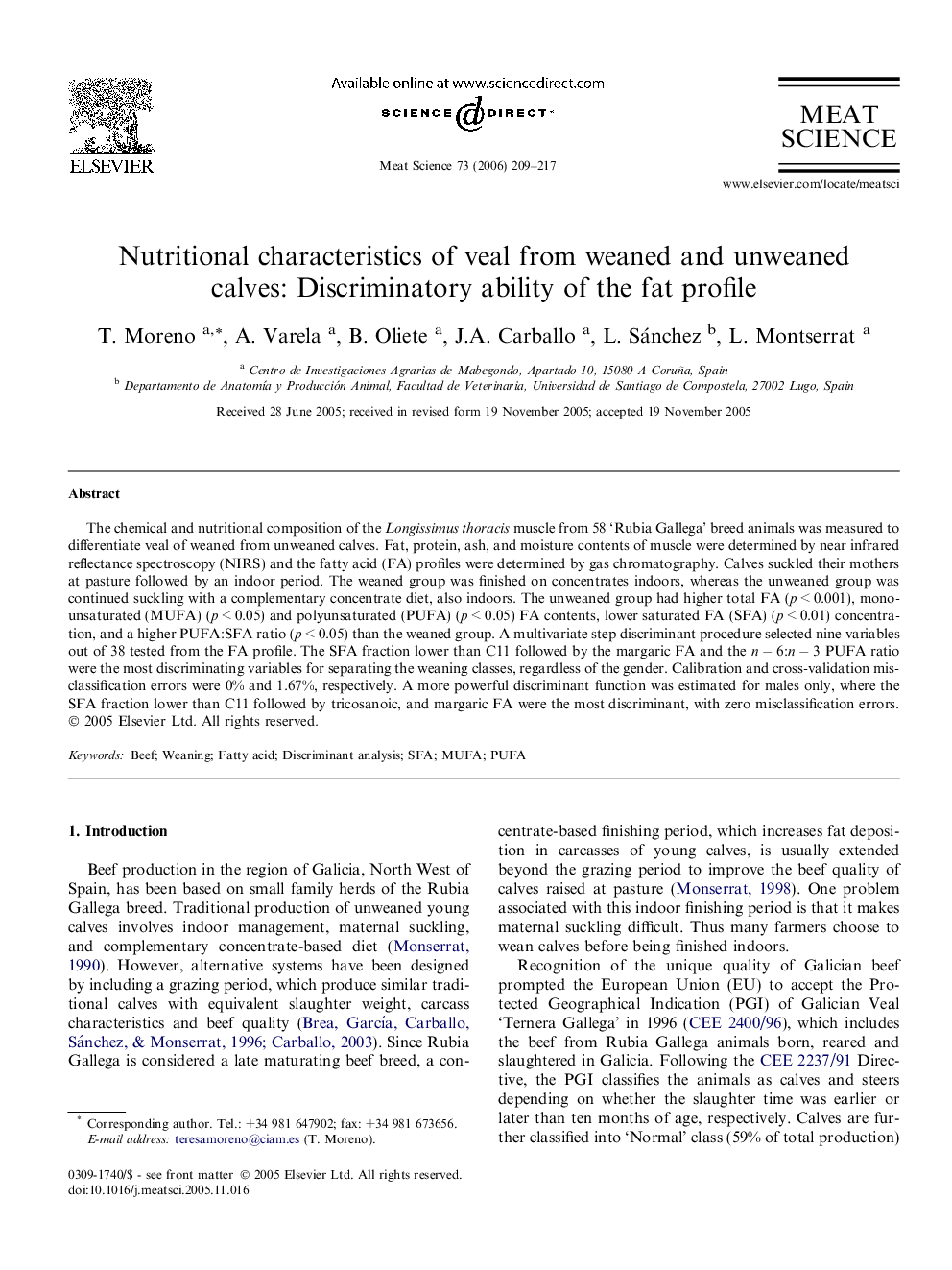| Article ID | Journal | Published Year | Pages | File Type |
|---|---|---|---|---|
| 2452122 | Meat Science | 2006 | 9 Pages |
The chemical and nutritional composition of the Longissimus thoracis muscle from 58 ‘Rubia Gallega’ breed animals was measured to differentiate veal of weaned from unweaned calves. Fat, protein, ash, and moisture contents of muscle were determined by near infrared reflectance spectroscopy (NIRS) and the fatty acid (FA) profiles were determined by gas chromatography. Calves suckled their mothers at pasture followed by an indoor period. The weaned group was finished on concentrates indoors, whereas the unweaned group was continued suckling with a complementary concentrate diet, also indoors. The unweaned group had higher total FA (p < 0.001), monounsaturated (MUFA) (p < 0.05) and polyunsaturated (PUFA) (p < 0.05) FA contents, lower saturated FA (SFA) (p < 0.01) concentration, and a higher PUFA:SFA ratio (p < 0.05) than the weaned group. A multivariate step discriminant procedure selected nine variables out of 38 tested from the FA profile. The SFA fraction lower than C11 followed by the margaric FA and the n − 6:n − 3 PUFA ratio were the most discriminating variables for separating the weaning classes, regardless of the gender. Calibration and cross-validation misclassification errors were 0% and 1.67%, respectively. A more powerful discriminant function was estimated for males only, where the SFA fraction lower than C11 followed by tricosanoic, and margaric FA were the most discriminant, with zero misclassification errors.
